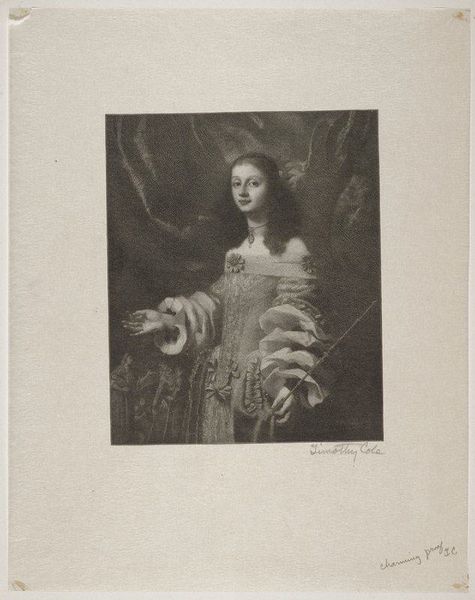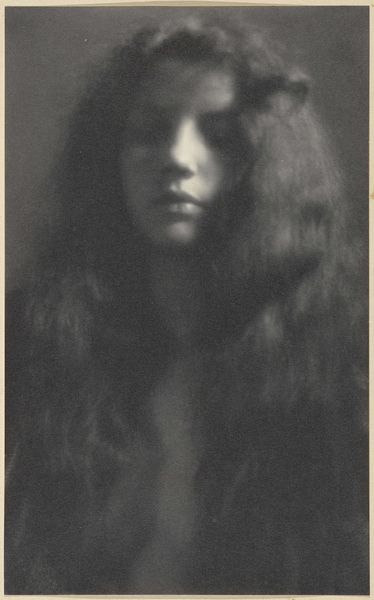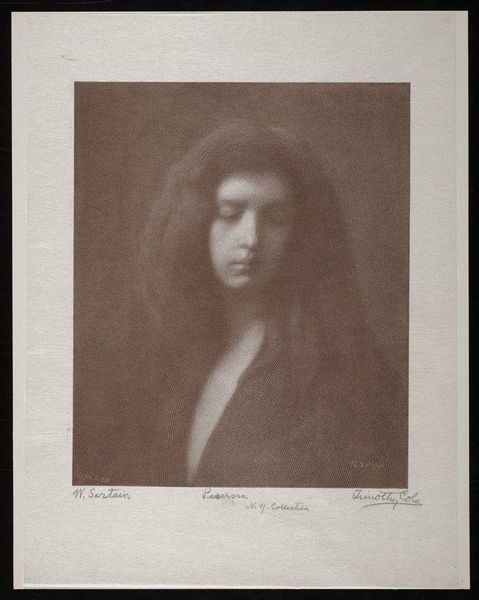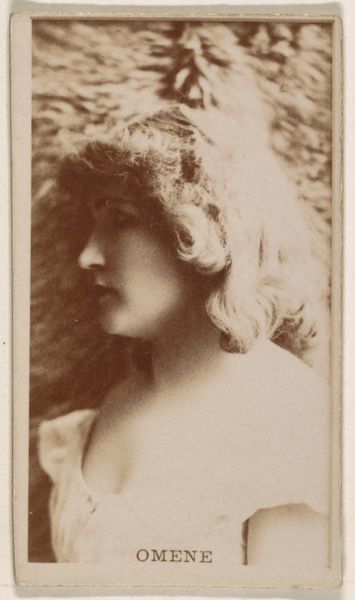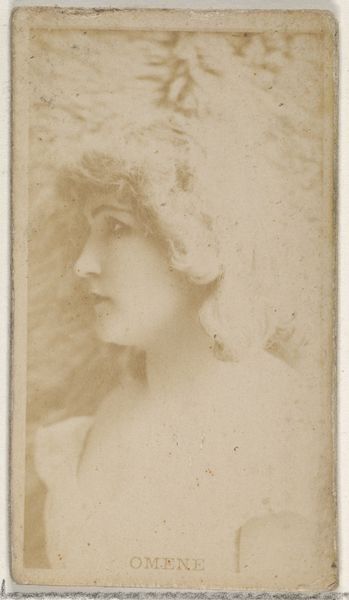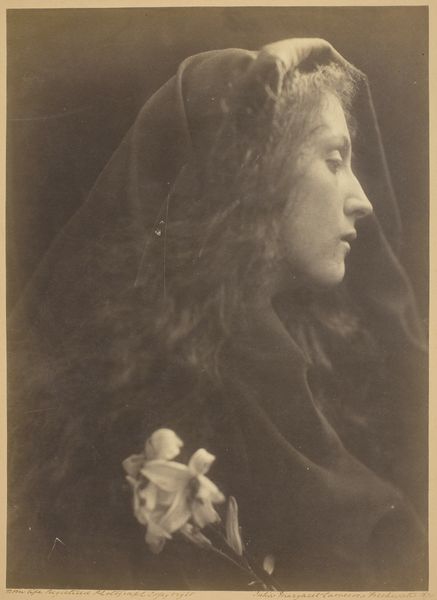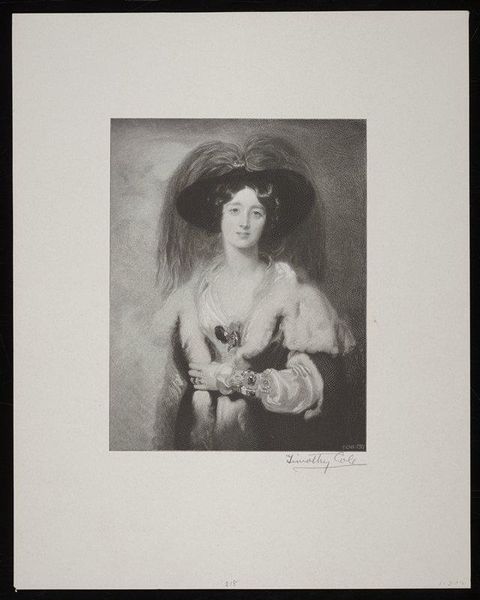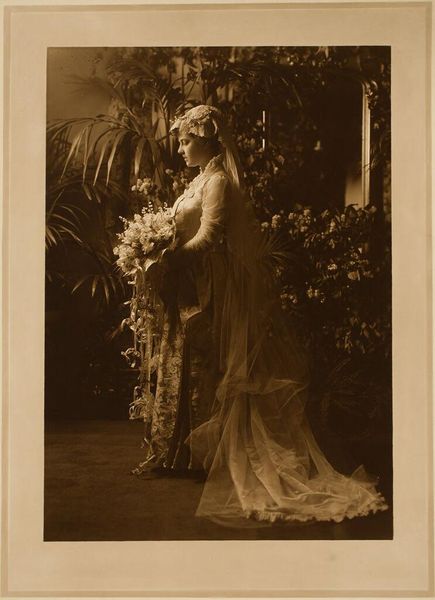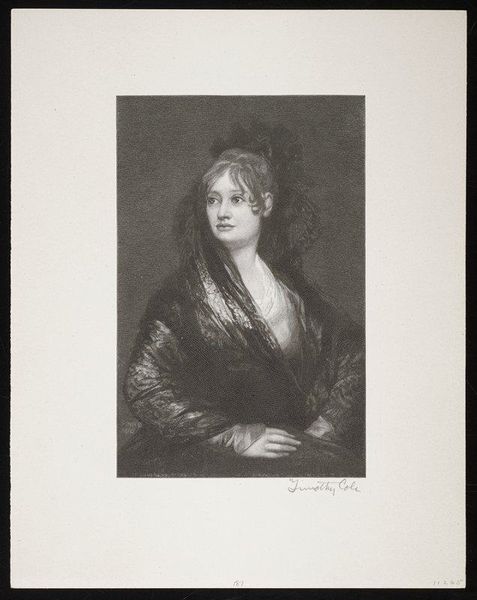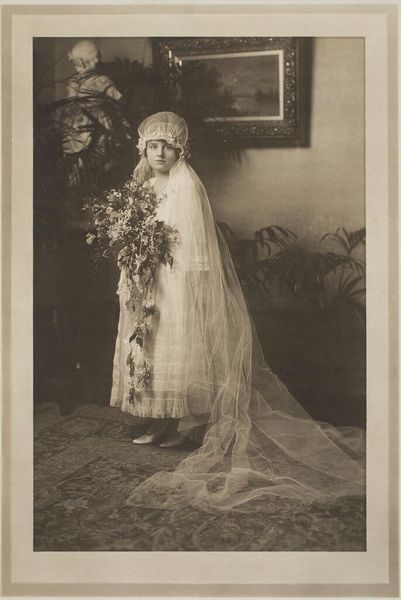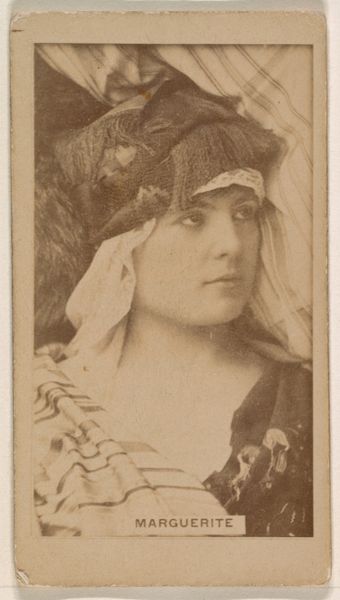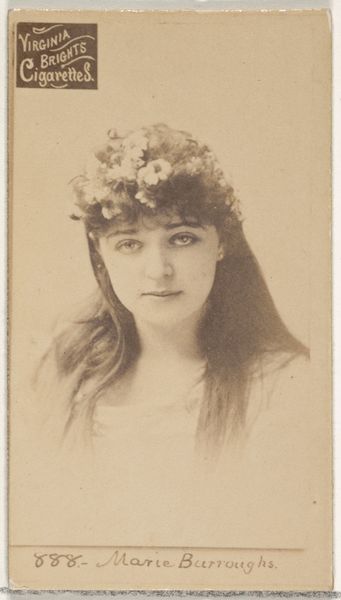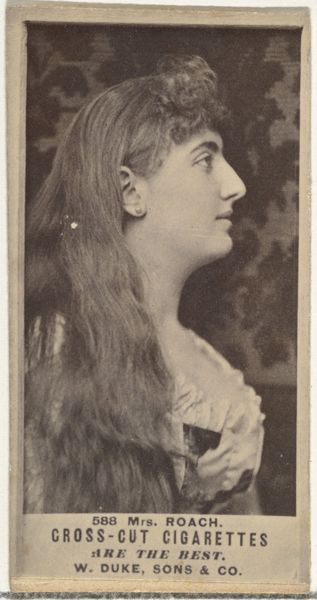
print, woodcut, wood-engraving
#
portrait
# print
#
pencil sketch
#
charcoal drawing
#
woodcut
#
united-states
#
symbolism
#
wood-engraving
#
realism
Dimensions: 6 1/2 x 5 1/8 in. (16.51 x 13.02 cm) (image)11 5/16 x 8 7/8 in. (28.73 x 22.54 cm) (sheet)
Copyright: No Copyright - United States
Curator: This delicate portrayal before us is "Ophelia," rendered in 1910 by Timothy Cole. It's a wood engraving, a print that captures a remarkable degree of detail. Editor: The first thing that strikes me is the overwhelming sense of sorrow—almost like she's already halfway to becoming a ghost, just a memory clinging to form. Curator: I think it's fascinating how Cole interprets the Shakespearean character through the lens of symbolism that was popular at the time, filtered through his identity as a leading American printmaker. He wasn't illustrating a specific scene, more so capturing an essence, don't you think? Editor: Absolutely, there's no chaotic drowning scene here. But this romantic idealization... it's troubling. Ophelia's madness and death are consequences of patriarchal structures, of being denied agency. Rendering her as this passive beauty almost erases the violence inflicted upon her. Curator: That's a valid point. Yet, looking at her gaze, there's a hint of defiance, or maybe just a knowing. She's adorned with flowers, traditionally associated with her tragic end but here almost giving her a naturalistic power, you see? Editor: Flowers offered more by the artist's interpretation, perhaps, than stemming from Ophelia's character, which makes me think about the male gaze. How often are women in art, especially tragic figures, stripped of their complexity and reduced to aesthetic objects? Curator: Hmm. The wood engraving technique itself, the careful carving to achieve these soft gradations…it feels both loving and, perhaps, a bit distanced, too. The artistry elevates but also transforms her suffering. Editor: That distance you feel? It speaks volumes. It reveals a chasm between the lived experiences of women and how they are memorialized – or perhaps, exploited – within the art historical canon. This engraving invites us, and even obliges us, to examine this. Curator: So, "Ophelia" becomes not just a representation of Shakespeare’s character, but also a mirror reflecting our own cultural biases. Funny that one person's art, so meticulously crafted, may actually represent such opposite positions. Editor: Exactly. We're left contemplating not only Ophelia's fate, but also the role art plays in perpetuating or challenging narratives around gender, power, and the aesthetics of tragedy. Thanks for pointing that out.
Comments
No comments
Be the first to comment and join the conversation on the ultimate creative platform.
